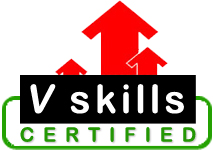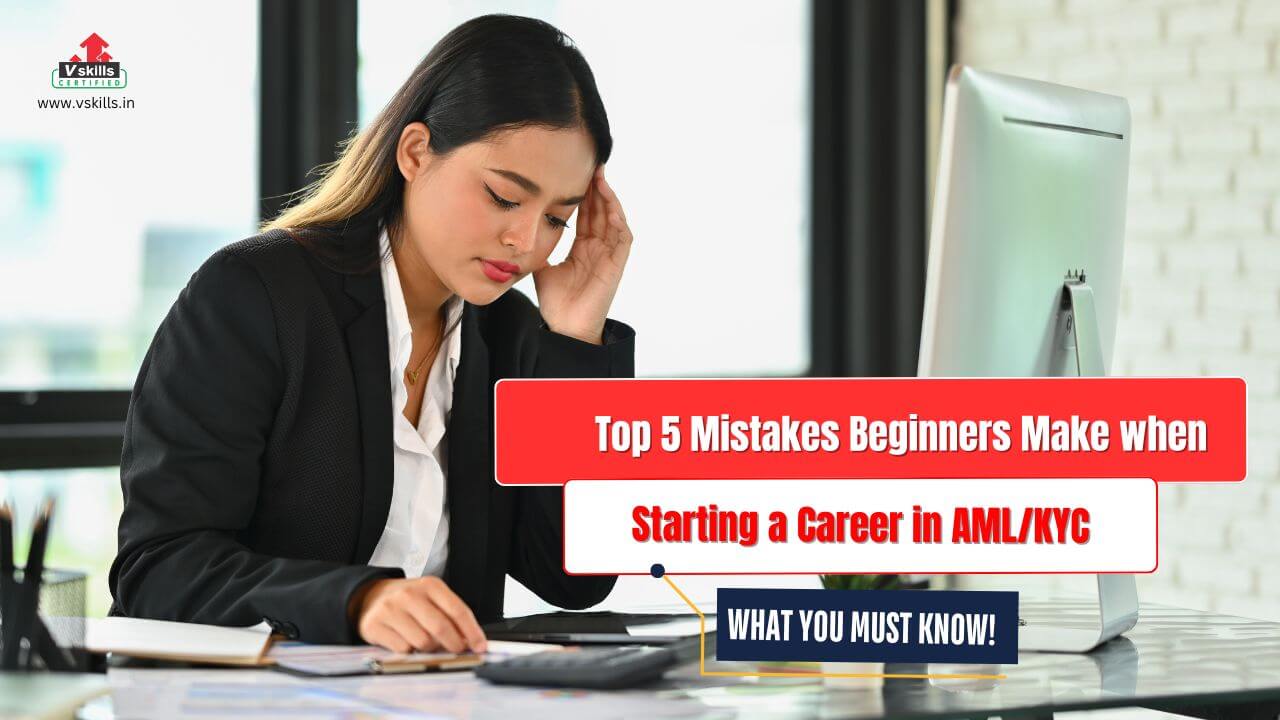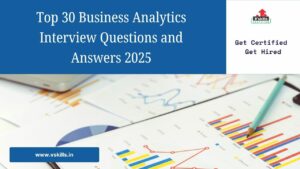If you are reading this, chances are you are either stepping into the world of Anti-Money Laundering (AML) and Know Your Customer (KYC) or seriously considering it. Get ready to enter one of the most critical and rapidly evolving corners of the financial industry. And no, this is not just about “flagging suspicious transactions” or “verifying customer documents.” Professionals pursuing a career in AML/KYC domain stand on the frontlines of the global fight against financial crime, fraud, money laundering, terrorism financing, and more.
Why is this field booming? Because crime is evolving, and so are the regulators.
Governments and financial institutions around the world are under mounting pressure to detect and prevent illicit financial flows. From the Panama Papers to billion-dollar crypto hacks, the spotlight on compliance has never been brighter. As a result, banks, fintechs, insurance firms, and even crypto exchanges are scrambling to build strong compliance teams, and AML/KYC professionals are in hot demand.
Sounds exciting, right? It is. But here’s the catch.
While the field is full of opportunities, it’s also unforgiving when it comes to mistakes. In AML/KYC, a missed detail is not just a rookie error—it can mean enabling a fraud ring, helping launder money, or exposing your organization to millions in regulatory fines. And yet, many beginners walk into their first AML/KYC role with misconceptions that quickly trip them up. They treat it like a checklist job with focus on tools instead of risk. They ignore the bigger picture.
The good news? You are already ahead of the curve by being here.
In this blog, we will break down the Top 5 mistakes that beginners make to build a Career in AML/KYC—the kind that can derail careers before they even take off. And more importantly, we will discuss about how to avoid them so you can build a strong, smart, and sustainable career in compliance. Because yes, mistakes are part of learning—but in compliance, some mistakes can cost you more than others.
So, Let’s make sure you don’t make them.
Top 5 Mistakes Beginners Make when Starting a Career in AML/KYC
❌ Mistake #1: Treating AML/KYC as Just a Checklist Job
One of the most common and most dangerous missteps that beginners make when planning a Career in AML/KYC field is treating it like a mechanical, box-ticking process. On the surface, it might seem like that’s all there is to it: verify identity, collect documents, screen against sanctions lists, check off requirements, and move on. But here’s the truth: compliance is not clerical work, it’s investigative work.
What does this Mistake look like in Practice?
Newcomers often find themselves inundated with onboarding checklists, system prompts, and internal workflows. It’s easy to assume that if all the required fields are filled out, your job is done. After all, the system says “completed,” right? – Wrong.
That mindset reduces your role to a data entry clerk—and in doing so, it overlooks the real objective of AML/KYC i.e., risk identification and mitigation.
- You are not just gathering information; you are interpreting it.
- You are not just verifying identities; you are evaluating intent, behavior, and patterns.
- Every customer you review is a potential gateway to deeper risks—money laundering, fraud, terrorist financing, corruption
Therefore, it’s your job to help close that gate before something slips through.
⚠️ Why this is Harmful?
This “checklist” approach breeds complacency. And in AML/KYC, complacency is costly.
When you operate on autopilot, you begin to miss red flags:
- A high-risk country in a business address that doesn’t match the client’s industry profile.
- An unusual pattern of cash deposits just under reporting thresholds.
- A beneficial owner linked to a politically exposed person (PEP) but listed under a different spelling.
These are subtle signs that demand analytical thinking, not robotic execution. Financial criminals are constantly adapting, and if you are only looking for what’s explicitly listed in your checklist, you are guaranteed to miss what’s intentionally hidden.
Worse still, when a compliance breach does happen – whether it’s a missed sanction hit, a poorly onboarded shell company, or an inadequate enhanced due diligence (EDD) review, the blame often falls on those who were “just following procedure.” And rightly so. Because regulators and auditors don’t want to hear that you followed a process, they want to know you understood the risk and took reasonable steps to prevent it.
💡 What to Do Instead?: Embrace the Investigator Mindset
The best AML/KYC professionals go beyond the checklist. They ask questions. They dig deeper. They understand that behind every document, data point, or transaction is a story, and their job is to read between the lines.
Here’s how to develop that mindset:
- Understand the “why” behind each control, document, and workflow. For example, why do we ask for the source of funds? Why do we screen for PEPs? What is the underlying risk we’re mitigating?
- Study typologies of financial crime – Familiarize yourself with how money launderers operate—layering, structuring, integration—and look for traces in your reviews.
- Analyze patterns, not just profiles – A customer might check all the right boxes but still show risky behavior in how they move funds or structure their business relationships.
- Challenge inconsistencies – If something doesn’t make sense, even if the system says it’s “O,K”—don’t be afraid to escalate or ask questions.
❌ Mistake #2: Neglecting to Learn the Regulatory Landscape
If Mistake #1 is about lacking depth in your day-to-day role, Mistake #2 is about missing the bigger picture altogether: not understanding the regulatory environment that defines the very purpose of AML/KYC.
What this Mistake Looks Like in Practice?
Many entry-level professionals dive into to make a Career in AML/KYC with little or no background in the legal or regulatory context. They know they are working on “compliance,” but they could not actually tell you compliance with what, exactly.
- Terms like BSA (Bank Secrecy Act), FATF (Financial Action Task Force), 5AMLD (Fifth Anti-Money Laundering Directive), FinCEN, or PEP are often just acronyms on training slides. They are rarely internalized. As a result, these professionals tend to treat regulatory expectations as abstract ideas instead of real, evolving frameworks that shape their work every single day.
- Worse, they may not recognize that regulations vary across jurisdictions, industries, and entity types. For example, what applies in the EU under GDPR and AMLD may look very different in the U.S., Singapore, or UAE.
This lack of context leaves them unprepared to navigate global compliance expectations, something that’s becoming increasingly important in today’s cross-border financial world.
⚠️ Why this is Harmful?
Ignoring the regulatory landscape is like trying to navigate a minefield blindfolded. You may avoid stepping on something dangerous once or twice, but it’s only a matter of time before you trigger a serious misstep.
Here’s what can go wrong:
- You might overlook a sanctions risk because you didn’t understand OFAC or UN sanctions lists.
- You might dismiss a customer’s business activity as “low risk” because you are unaware of its red flags under FATF’s high-risk industries.
- You might perform inadequate due diligence on a PEP because you didn’t know what qualifies someone as a politically exposed person under global definitions.
And in the eyes of regulators, “I didn’t know” cannot be counted as an excuse. Compliance professionals are expected to act with reasonable competence, and that includes keeping up with the laws that govern the systems you are working within.
💡 What to Do Instead?: Become Fluent in the Regulatory Language of Compliance
The most successful AML/KYC professionals don’t just know how to follow internal procedures, they understand why those procedures exist, and how they tie back to legal obligations. They make it a habit to stay curious and current.
Here’s how you can do the same:
- Study the foundational frameworks: Begin with the FATF Recommendations, the BSA, and USA PATRIOT Act (U.S.), or the EU AML Directives, depending on your jurisdiction. These are the cornerstones of modern AML policy.
- Read enforcement actions: Regulatory fines and penalties are some of the best teachers. Review real cases from FinCEN, FCA, MAS, or BaFin to see how breaches happen—and what investigators look for.
- Follow thought leaders and alerts: Subscribe to updates from regulatory bodies like FATF, FinCEN, FCA, EBA, or ACAMS. Even weekly digests will keep you informed about emerging risks, evolving policies, and landmark cases.
- Get certified: Consider certifications that reinforce the regulatory foundations and demonstrate commitment to the profession.
- Ask questions internally: Don’t be afraid to query your compliance officers or legal teams about why certain policies exist. You will get practical insights that no textbook can teach.
Understanding the regulatory environment transforms your role from “just another analyst” into someone who thinks strategically, identifies risk proactively, and makes better, defensible decisions.
❌ Mistake #3: Focusing Too Much on Tools, Not Enough on Risk Assessment
In the digital era of compliance, it’s easy to get dazzled by technology. With sophisticated transaction monitoring systems, automated screening platforms, AI-driven alerts, and client onboarding dashboards, many beginners naturally assume that the tools do the job, you just need to click, review, and approve. But this over-reliance on tools, without understanding risk, can quickly become a blind spot.
What this Mistake Looks Like in Practice?
Many first-time AML/KYC professionals fall into the trap of becoming system operators rather than risk evaluators. They trust that the software will catch everything important, and they start to rely heavily on whether something is “flagged” or not, or whether a customer is “cleared” by the system.
This creates a false sense of security.
For instance, if the transaction monitoring system does not generate an alert, it’s assumed there is no risk. If the onboarding tool auto-approves a low-risk rating, it’s accepted without question. If a sanctions screening tool doesn’t match a name, the analyst moves on, even when there are potential red flags like name spelling variations or cross-border ties.
⚠️ Why this is Harmful?
Technology is only as good as the logic behind it, and the people interpreting the results. Reason why relying too much on tools, without understanding the underlying risk indicators, is dangerous:
- False negatives: Tools may fail to flag high-risk customers if profiles are incomplete, data is outdated, or thresholds are poorly calibrated.
- Context matters: A transaction might not hit the trigger level for an alert, but when viewed in context—say, frequency, timing, or source—it could indicate suspicious activity.
- Risk is multifactorial: Tools assess discrete data points, but real risk assessment demands a human understanding of intent, environment, industry, and behavioral patterns.
Think of your tools like a microscope, they help you zoom in, but you still need to know what you are looking for. The tech can aid your decision-making, but it cannot replace your judgment.
💡 What to Do Instead?: Master Risk Thinking Before System Navigation
Top compliance professionals use tools to enhance, not replace, their understanding of financial crime risk. They ask questions that the systems cannot by connecting the dots and exploring beyond the dashboard.
Here’s how you can do the same:
- Understand risk models: Learn how Customer Risk Ratings (CRR) and Transaction Risk Scoring work. Know the variables that influence risk: jurisdiction, industry, entity type, product usage, volume, and behavior.
- Think like a money launderer: If you wanted to launder $10 million, how would you do it? What would you try to hide? This mental model helps you spot patterns and anomalies that tools often miss.
- Ask “what’s missing?”:Just because the tool didn’t flag it doesn’t mean it’s clean. Ask yourself what data might be incomplete or what patterns might not fit the risk profile.
- Triangulate information: Compare information from multiple sources—KYC profile, onboarding documents, transaction behavior, and external media—to assess risk more holistically.
- Stay curious: Don’t just approve because the system says “low risk.” Ask “Why is it low risk?” Is there a reason? Could it be wrong?
In short, the best tools in the world are useless if you don’t have the mindset to interpret their output. Technology should support your compliance function, but human insight remains irreplaceable.
❌ Mistake #4: Ignoring the Importance of Documentation and Audit Trails
In the high-pressure environment of AML and KYC, where speed often battles thoroughness, one area beginners frequently overlook or rush through is documentation. They think: “I reviewed the case, it looked fine, I closed it. Why do I need to write an essay about it?”
But here’s the truth: In compliance, if it is not documented, it didn’t happen. And if it’s poorly documented, it might as well have been done incorrectly.
What this Mistake looks like in Practice?
- A name screening alert is closed with just a one-liner: “False positive. Not a match.”
- A suspicious transaction is dismissed without any explanation or evidence trail.
- Enhanced Due Diligence (EDD) reviews are completed with minimal notes or supporting documentation.
- Analysts reuse templated language without tailoring it to the specific customer or risk involved.
- No record of internal communications, escalations, or decision rationale is maintained.
At first glance, these may seem like time-savers. But in reality, they’re ticking time bombs when regulators, internal auditors, or law enforcement come knocking.
⚠️ Why this is Harmful?
Poor documentation doesn’t just reflect laziness, it signals process failure because:
- Regulators and auditors rely on documentation to understand your decision-making: If it’s not clearly recorded, they will assume it was not done, or was done poorly.
- Investigations often depend on historical records: If you or your colleague needs to revisit a case six months or a year later, clear notes and audit trails can save hours and avoid costly errors.
- Weak audit trails increase liability: If a financial crime slips through due to an improperly closed alert or missed red flag, vague documentation will likely be scrutinized and used as evidence of compliance failure.
- Knowledge continuity suffers: AML teams have high turnover, so without detailed case notes and rationale, new team members may repeat mistakes or miss patterns.
💡 What to Do Instead?: Build a Culture of Defensible Decision-Making
Effective documentation is not just about compliance, it’s about credibility and risk mitigation. Think of it as building your defense file in real time. Here’s how to make it second nature:
- Document the “why,” not just the “what.” Don’t just say “No match.” Say “No match due to mismatched DOB, nationality, and no ownership links to the entity.”
- Be specific and evidence-based: Reference the exact information used: passport numbers, transaction references, URLs, public sources, or internal memos.
- Capture judgment calls: If you made a decision based on context or experience, explain it clearly. This shows you are thinking critically—not robotically following a script.
- Use structured templates wisely:Templates are helpful, but avoid blindly filling them in. Customize where needed to reflect the nuances of each case.
- Log escalations and communications:If you consulted with a supervisor or legal team, make a note of it, including date, name, and rationale.
Remember: in AML/KYC, your notes are not just records, they are a witness to your professionalism, diligence, and integrity. Done well, they tell the story of a compliance team that’s thorough, accountable, and prepared.
❌ Mistake #5: Failing to Develop a Broader Understanding of Financial Crime Typologies and Trends
When stepping into AML/KYC for the first time, it’s easy to zero in on tasks – reviewing documents, running screenings, clearing alerts, and completing forms. But in doing so, many newcomers overlook one of the most essential skills in compliance—understanding how financial crime actually works. Without that context, you are playing a game where you don’t know the rules—or worse, the moves of your opponent.
What this Mistake looks Like in Practice?
- Focusing entirely on forms and profiles, without considering the behavior behind the customer.
- Dismissing red flags because they don’t “fit” the template or because you are unaware of how they might connect to laundering, fraud, sanctions evasion, or terrorist financing.
- Sticking to local regulations or one line of business (like retail banking) and failing to study how crime operates across different industries, jurisdictions, and channels.
- Treating each case in isolation, without recognizing patterns, networks, or emerging threats.
This lack of awareness keeps beginners reactive and rule-bound, instead of being proactive risk identifiers—the kind of professionals that regulators and senior compliance officers value most.
⚠️ Why this is Harmful?
AML/KYC is not just a legal function, it’s a counter-intelligence operation against financial crime. Without a deep and evolving understanding of typologies, you are:
- More likely to miss subtle, high-risk behavior.
- Less equipped to see patterns across customers, geographies, or product lines.
- Unprepared to respond to evolving criminal tactics, such as mule networks, trade-based money laundering (TBML), or crypto laundering.
- Less credible in decision-making and discussions with stakeholders, auditors, or law enforcement.
Think about it: would you trust a customs officer who’s never studied smuggling techniques?
💡 What to Do Instead?: Become a Student of Financial Crime
To successfully build a Career in AML/KYC, you must go beyond the SOPs and develop a wide-angle lens. Here’s how:
Understand Typologies
Start with foundational ones like:
- Structuring/Smurfing: Breaking large amounts into small transactions.
- Shell Companies: Hiding beneficial ownership and movement of funds.
- Trade-Based Money Laundering (TBML): Falsifying invoices, over/under-invoicing.
- Use of Crypto Assets: Tumblers, mixers, and cross-chain laundering.
- Sanctions Evasion Techniques: Re-routing, front companies, name variations.
Read FATF case studies. Study public enforcement actions. Learn how criminals think, and how they adapt.
Follow Emerging Trends
Financial crime evolves fast. Keep up with:
- New scam models (e.g., pig butchering, AI-generated fraud)
- Global regulatory shifts (e.g., 6AMLD, AMLA, travel rule for crypto)
- Cross-border money flows and geopolitical risks
- Non-traditional sectors: fintechs, casinos, real estate, art
Subscribe to alerts from FATF, FinCEN, EU AML Authority, and global watchdogs. Join AML forums. Read blogs, whitepapers, and industry newsletters.
Ask Bigger Questions
Whenever you are working a case, go beyond the task:
- Why might this customer structure their transactions this way?
- How could someone exploit this product for laundering?
- What other indicators should I look for based on this risk profile?
These questions sharpen your investigative instincts, and separate you from checklist only analysts.
Beyond Mistakes: Building a Strong Career in AML/KYC Day One
Starting a career in AML/KYC can feel overwhelming, with complex regulations, fast-changing technologies, and high stakes. But beyond avoiding pitfalls, the difference between a good analyst and a successful compliance professional lies in how you approach growth, learning, and your role in the broader fight against financial crime.
Here are key areas to focus on, to build a rewarding, resilient career in AML/KYC:
1. Develop a Growth Mindset: Stay Curious and Keep Learning
AML/KYC is a constantly evolving field. New regulations, emerging crime tactics, and innovative technologies mean what you learned yesterday could change tomorrow.
- Commit to continuous learning: Make it a habit to read AML news, regulatory updates, case studies, and attend webinars.
- Ask questions: Always seek to understand the “why” behind processes and decisions.
- Embrace challenges: Mistakes and difficult cases are your best teachers.
- Certifications matter: Consider certifications like CAMS (Certified Anti-Money Laundering Specialist), ICA (International Compliance Association), or specialized courses in sanctions or fraud. They build credibility and deepen knowledge.
2. Master Both the Technical and Soft Skills
AML/KYC professionals need a unique blend of skills:
- Technical skills:
- Familiarity with AML software (e.g., Actimize, FICO, NICE)
- Data analysis and pattern recognition
- Regulatory knowledge (FATF guidelines, local AML laws)
- Soft skills:
- Critical thinking and skepticism
- Communication (explaining complex issues clearly)
- Collaboration with legal, audit, and law enforcement teams
- Ethical judgment and integrity
Balancing both makes you an effective analyst and trusted advisor.
3. Build Strong Documentation and Communication Habits
- Practice writing clear, concise, and evidence-backed reports.
- Develop the ability to escalate issues persuasively but factually.
- Good documentation is your “voice” when you are not in the room—it can influence decisions, audits, and investigations.
4. Understand the Business and Industry you are Protecting
Every financial institution has its own products, services, risk appetite, and customer profiles.
- Take time to learn your organization’s business model deeply.
- Understand how products like loans, trade finance, or digital wallets work.
- This contextual knowledge helps you spot suspicious behavior more quickly and accurately.
5. Network Within the AML Community
Compliance is a community effort.
- Join professional groups and forums (LinkedIn AML groups, ACAMS chapters).
- Attend industry conferences, virtual meetups, or webinars.
- Learn from experienced professionals and mentors who can share insights and career advice.
- Building relationships opens doors to new opportunities and knowledge sources.
6. Leverage Technology but Don’t Rely on It Blindly
AML tech tools can speed up investigations, but they’re not infallible.
- Develop skills to critically evaluate alerts and system outputs.
- Learn the basics of data analytics and visualization to uncover patterns.
- Stay informed about emerging technologies like AI and blockchain, and understand their AML implications.
7. Maintain Professionalism and Ethics
AML/KYC professionals often face pressure, whether from internal teams pushing for faster onboarding or external challenges.
- Uphold the highest standards of integrity.
- Be courageous to escalate suspicious cases even if it’s uncomfortable.
- Remember, your role protects not just your institution but the financial system and society.
8. Plan Your Career Path
AML/KYC offers diverse opportunities:
- Analyst roles
- Investigator or case manager
- Compliance officer or manager
- Sanctions specialist
- Regulatory liaison or auditor
- Consultant or trainer
Set short- and long-term goals. Seek cross-functional projects or rotations to broaden your experience.
Final Thought
Mistakes are inevitable when starting out but they don’t have to define your trajectory. The best AML/KYC professionals didn’t become experts by memorizing rules. They became experts by questioning them, understanding their purpose, and constantly learning how financial crime adapts.
Your goal is not to just comply. Your goal is to detect, prevent, and outsmart the launderers, fraudsters, and evaders.
So, take each mistake as a lesson, but make sure you grow past it. Because in the fight against financial crime, curiosity, judgment, and awareness aren’t just nice-to-haves. They’re your best defense.
Remember, your career in AML/KYC is not just a job, it’s a commitment to protecting the financial ecosystem from harm. Beyond avoiding mistakes, your growth will come from curiosity, diligence, ethical rigor, and a willingness to learn and adapt. Build these habits early, and you will not only avoid common pitfalls but also position yourself as a valuable, trusted expert in this critical and rewarding field.
Lets Quickly check if you are Ready!
🔍 Are You Truly Job-Ready for AML/KYC?
Answer honestly — this self-check goes beyond surface-level knowledge to assess practical AML/KYC readiness.
Study Resource: Practice Test
After understanding and learning about the Certified AML-KYC Compliance Officer exam topics, it is time for practice tests. That is to say, practice tests are important for better preparation as by assessing yourself with these tests you will know about your weak and strong areas. Moreover, you improve your answering skills for getting better results. So, make sure to find the best practice sources.

AML KYC Best Interview Questions
Go through these latest Online interview questions to prepare for the AML/KYC compliance role in the Banking industry as well as in corporates. The questions are based on recent interviews conducted. Prepare now!




